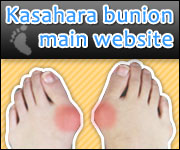The importance of recognizing Foot Heberden (Kasahara Node)
With foot Heberden, painful swelling for months leads to sudden deformation progressing into severe bunion (Hallux Valgus). In cases with slower progress, as with hand Heberden, the deformation can be painless.
General bunion (Hallux Valgus) and Heberden related bunion (Kasahara Node) must be distinguished for prevention and to stop the progression. Early recognition and treatment of Foot Heberden (Kasahara Node) is critical because the condition is progressive, particularly as a result of weight load. Few specialists recognize and treat “Feet Heberden (Kasahara Node)” and sufferers of this condition end up with tremendous deformation and malfunctions.
How to distinguish Foot Heberden (Kasahara Node)
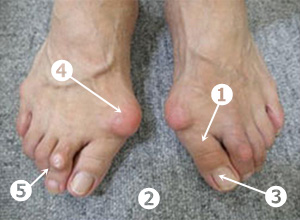
- 1 Joint of big toe becomes stiff.(ankylosing deformation)
- 2 Strong pain and sharp deformation of big toe after 4 to 6 months
- 3 The big toe is bent and twisted with the toenail facing outside (as shown in the picture on the right).
- 4 The bones (root of the big toe and the ball of the foot) are thick and high.
- 5 Callus can be seen on the surface of toes and/or on the soles at the root of the toes.
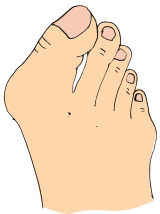
Also, pain occurs more frequently at the change of season or by change of weather. It is stronger when starting to walk in the morning and it gradually becomes weaker by afternoon.
Heberden starting from feet
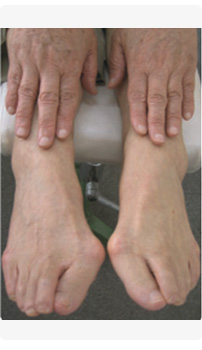
Female 60’s with Feet Heberden, Bunion, Lumber hernia, Headache, Stiff shoulder
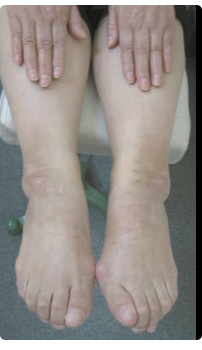
Female 70’s with Feet Heberden, Bunion, spondylolysis, osteoarthritis of the knee, Pain on instep
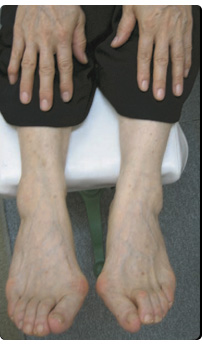
Female 50’s with Feet Heberden, Bunion, Depression, Dizziness, and Irregular pulse
Heberden starting from both hands and feet
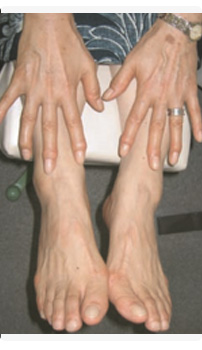
Female 60’s with Feet Heberden, Bunion
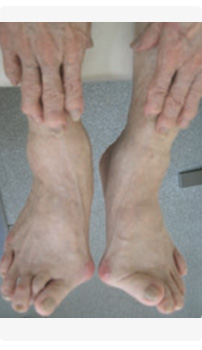
Female 70’s with Feet Heberden, Bunion with progressed deformation
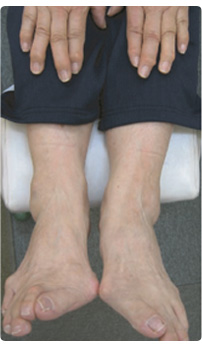
Female 60’s with Feet Heberden, Bunion and Lower back pain

